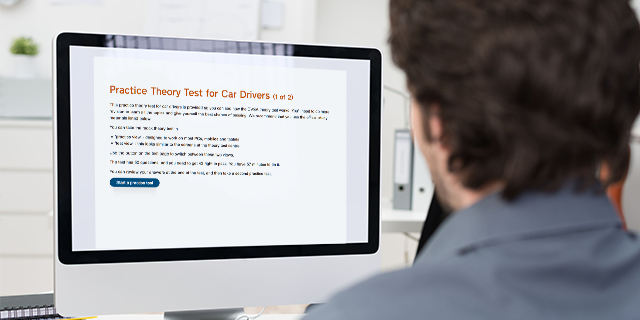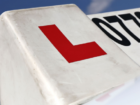Passing your theory test mostly comes down to having a good understanding of how the road works and putting in lots of practice time, which means you’ll need to revise until you know your road signs inside out and can spot a road hazard a mile off. There’s no easy way round it.
Once you’ve passed the theory and it’s out of the way, you’re one step closer to doing your practical test and that’s one step closer to independence, so it’s worth putting in the hours.
Here’s our top tips for passing your theory:
Make sure you fully understand what you’ll be asked to do
One part of your theory test will be multiple choice. You’ll be given 50 multiple choice questions from a bank of 1,000 and will need to get 43 of those correct in order to pass the section, with just over a minute to answer each question.
The second part is a hazard perception test which involves a series of clips from the driver’s perspective with hazards that regularly pop up. You’ll need to click every time you see a hazard and get 44 out of 75 to pass.
Put in the hours
The Driving Standards Agency (DVSA) advises that you complete at least 20 hours of revision in order to be fully prepared.
If you learn best through reading and writing then get a copy of their official theory test handbook and make notes as you go through it, then have someone else test you with a quick-fire question round until you know the answers inside out.
If you’d rather test your knowledge online then you can use one of the many theory test websites or apps out there which will randomly generate questions and driving scenarios for you.
These are great to do if you currently get around on public transport and have some time to pass.

Test yourself while you’re out on the road
Use any opportunity you’re out on the road as a real-life test of your knowledge and hazard perception skills.
Get your driving instructor to quiz you on the road signs you pass during your lessons, or if you’re the passenger on a car journey, see whose faster between you and the driver at spotting upcoming hazards!
Practise the hazard perception test online so you know when to click
This section of the test often catches people out because they haven’t practised the test enough and don’t get into the habit of clicking fast enough.
Or they click too many times and the cheat detection system kicks in and disqualifies them. Implement a two-second-rule so after the initial click you wait two seconds before clicking again – this stops you clicking too early and therefore scoring a zero.
Be prepared on the day
The most important thing to bring with you is your provisional licence.
If you don’t have this, you won’t be allowed to sit the test and will need to re-book for another day.
You’ll have 15 minutes before the test to get used to the touch screen and check your equipment is working properly, and a three minute break between the multiple choice section and the hazard perception section.
Good luck.









